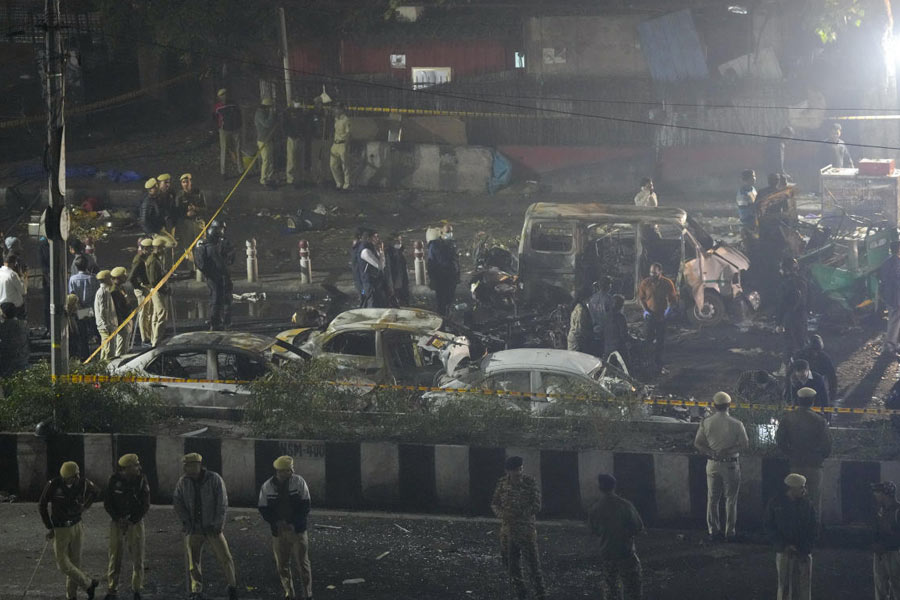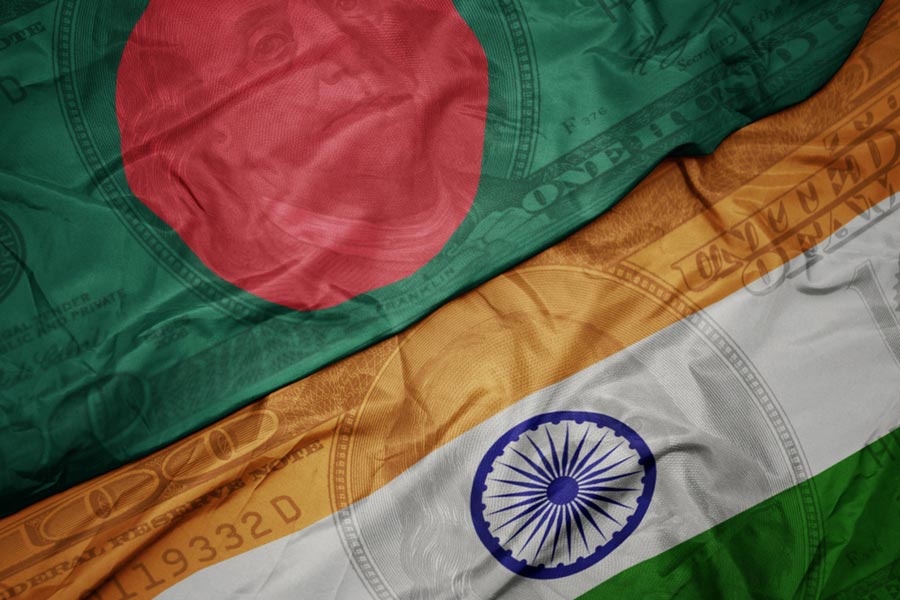Aditya Sarpotdar has followed up the success of last year’s sleeper hit Munjya with another box-office winner in Thamma, which is all set to enter the ₹200-crore club, and also takes forward the legend of the Maddock Horror Comedy Universe (MHCU), that began with Stree in 2018. t2 engaged in a post-release chat with Sarpotdar on Thamma and what lies ahead.
Thamma is well on its way to the ₹200-crore club. Are you the kind of filmmaker who keeps track of numbers?
Numbers matter because they give you an indicator of how many people are watching your movie. The ultimate goal of making a movie is to take it to the maximum audience base it can get to.
I come from a background of production in regional cinema. I believe that every film should be made and distributed in such a way that it at least recovers the money spent on it. I track numbers to a certain point where I see it as a safely mounted project. After that, how far it goes is secondary and is something that I don’t really get into because as a director, my job was to make a film that got the producer to a point where investing in it has worked for him.
Munjya was made on a much lesser budget (than Thamma) and it became a surprise hit. I didn’t have to track its box-office figures for a long time because within the first two-three weeks, we had recovered its whole budget. With Thamma, we are close to recovering our budget and once that is done, I will move on. But honestly, even otherwise, I don’t track numbers on a daily basis.
What are viewers reacting to the best in Thamma?
I prefer to not listen to or watch every review and every comment... there is too much noise and one doesn’t really know what to absorb and what to leave out. I visit as many theatres as I can and gauge the audience’s reactions. Post a show, or even in the interval, I try and get a sense of what people are feeling about the film. The intention of setting up Thamma as a family Diwali entertainer has paid off to a great extent. Families are walking in, kids are coming in with parents, elderly couples are coming in.... When you are making a film for the family, it is always a big responsibility. You have to give them a certain kind of entertainment which they can all enjoy together. Kids are also loving the film, especially certain sequences like the Betaal-Bhediya fight.
I also feel that when you are making a film which takes ahead the larger story of the universe, there is a certain responsibility on these films to cater to the set audience base that is excited to watch these movies and wants to know what is going to happen next. Thamma not only tells you the story of Alok (Ayushmann Khurrana) and Tadaka (Rashmika Mandanna), who are both Betaals, it also shows what the other films in this universe are moving towards. As a filmmaker, when you leave the theatre realising that the audience is discussing your film and wants to know more about what lies ahead, it is a great feeling.
Though it is a part of the MHCU, what works for Munjya is that it can be enjoyed as a standalone film. Do you feel that isn’t the case in Thamma, given that it is more tied to this universe?
You are right that Munjya is a unique film. The character of Munjya and the Maharashtrian folklore referencing it made it a standalone watch. It had the kind of story that the Hindi commercial space has rarely touched. It was only in the end credits that we added a scene of its connection to the universe — the one where Varun (Dhawan, as Bhaskar/Bhediya) and Abhishek (Banerjee, as Jana) come into the film.
With Thamma, we are in the middle of this universe. We didn’t just want to add end scenes or a cameo to connect it to the universe. We know that these stories are going to go ahead and become bigger and more interesting.
Thamma is the film that bridges this universe into becoming more exciting. The presence of Betaals, that is, vampires makes it more universal. Globally, vampires are present in the popular entertainment space as a huge genre. I wanted to present my take on vampires by rooting them in Indian folklore.
But I also didn’t want to overburden the film with too many things. It had to definitely serve the larger purpose of the universe, but we have tried to do justice to the stories of the primary characters too. This film sets up Ayushmann’s character in this universe, he is the hero we will follow when the Betaals team up or even go against each other. In the next few films, you will see more of these characters and their stories.
The film was earlier called ‘Vampires of Vijayanagar’. What made you go with Thamma?
This film was being developed by Amar Kaushik (producer-director) and its writers even before I came on board. They had developed a quintessential vampire story and it was called ‘Vampires of Vijayanagar’.
But when I read it, I felt it was important to change the idea of a vampire it had and make it more Indian. Vampires, as a larger concept, comes from the West. It is very Eastern European... the legend of the vampire comes from Transylvania, from a part of the world which is constantly dark and the weather is extremely cold. Vampires are nurtured better in that world and made more believable... like the inherent sense of eeriness one feels while watching Nosferatu (1922 and 2024) . There is a certain sense of deadness in that environment that works well.
But we were making a film that was set in India. It is a comedy but it also had to have these otherworldly creatures that looked believable in this world. During my research, I came across the concept of Betaal, which, in a certain sense, preceded the whole vampire legend. There are articles by Western authors on theories of how the Betaal is the origination idea of the vampire — Betaals were set up in legends way before the vampires were brought in as popular characters into cinema or literature. I went further into exploring the legend of the Betaals and how they can be integrated into our story. We found the whole concept of ‘raktabeej’, for instance. Some of these stories were so fascinating that the possibility of this film becoming not just a vampire film was very exciting for us. That is why we moved away from the world of vampires and into that of Betaals.
We then arrived at Thamma as a title because Thamma is the leader of the Betaals. Thamma comes from the idea of Ashwatthama, who was immortal, but also a cursed immortal. Betaals are like that — their purpose in this world is over, but one in which they continue to walk because of their immortality. With the concept of Betaal becoming so strong in this film, it made a lot of sense to not have the world ‘vampire’ in the title.
Which Easter eggs, hat tips and references did you have fun incorporating into Thamma?
Something immediate that comes to mind is that Tadaka has a certain sense of rebellion — she wants to move away from the world of Betaals but she is not allowed to venture into the human world. The fact that she lives inside the body of a plane that crash-landed in the jungle is a symbol of who she is — someone who wants to take flight but can’t. And then she meets Alok, who works for a news agency called ‘Azad News’ and he is the one who gives her a sense of freedom. These were some of the things we added but we didn’t want anything to be in your face.
The idea of the raktabeej is somebody who could multiply drinking human blood. In the film, you see Nawaz’s character (Yakshasan/ Thamma) multiplying into a far bigger version than what he was earlier. The inclusion of Chamunda as the Devi that is worshipped by the Betaals is an indication of what will follow soon (MHCU has lined up a film called Chamunda). It is definitely fun to see Easter eggs being decoded by fans as well go along in this journey.
The MHCU writers’ room must be constantly buzzing. While the highs are always there, has it somewhere become a beast that needs constant feeding?
More than a beast for us, it has become very exciting to see how more and more people are getting increasingly invested in this universe. Amar and Niren (Bhatt, writer) are the originators of this idea of the universe. They had a generic roadmap ready, which was then announced as the slate of films that will follow. Where this roadmap will lead these characters becomes important for me as a director of an independent film in this world which will also move on to something bigger in the larger scheme of things. We all have quirky and crazy ideas that make this world better and this roadmap is now being followed in a much more dynamic way.
Also, every film in this universe has its own writer, who works in adding his own flavour. So we have the ‘principals’ of this universe — Amar and Niren — and then there are directors and writers like me who come in and create our films, all the while adding to the universe as a whole. We also keep an eye on fan theories and what people think of this world and their ideas about how it can go forward. It is very fascinating that there are so many people who are so thoroughly invested in the stories of this world.
What is that one question you have about the MHCU that you want answered? Tell t2@abp.in











